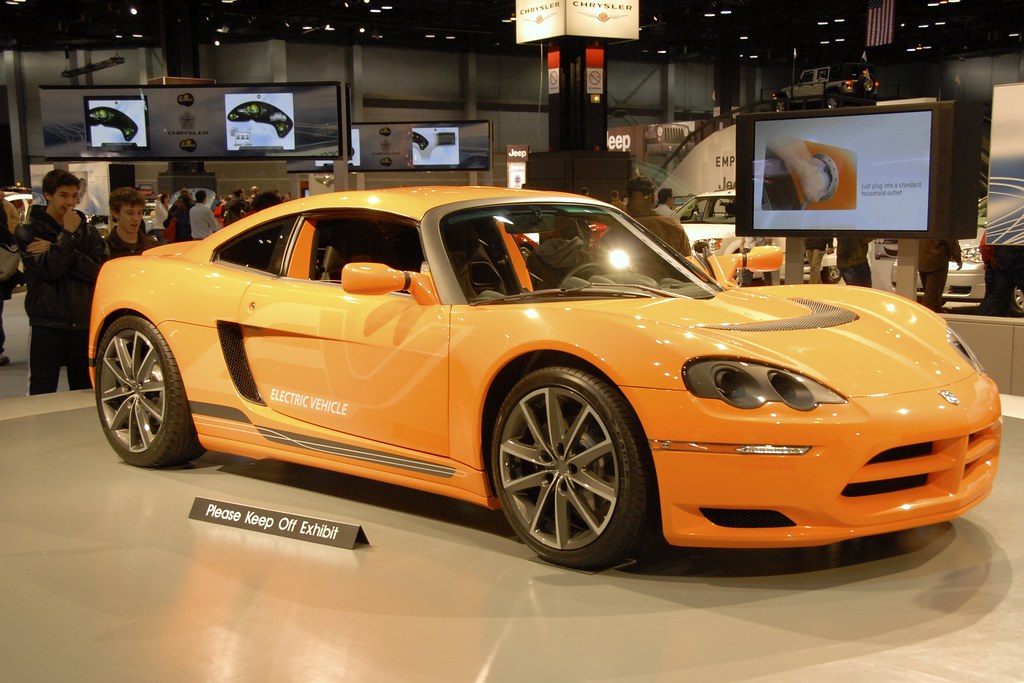
They just don’t make them like they used to—except, sometimes, they do. Every now and then, a manufacturer decides to bring back a legendary nameplate, blending vintage style with modern performance. Yet, for every car that gets a second chance in the limelight, there are countless classics left in the past that unequivocally deserve another shot at gracing our roads. The allure of their original design and engineering continues to captivate enthusiasts, proving that true automotive greatness transcends generations.
The 1960s, a decade synonymous with innovation and raw automotive passion, bestowed upon us some of the most iconic machines ever built. From the visceral thrill of raw muscle cars to the sophisticated elegance of grand tourers and the undeniable prestige of race-proven legends, this era was a crucible of automotive excellence. Many of these vehicles weren’t merely modes of transport; they were statements, changing the game and building cult followings that persist to this very day.
Each of these classics possesses an inherent, special quality that still resonates deeply with enthusiasts, suggesting their enduring potential. Imagine a world where the right blend of retro design, informed by contemporary aesthetics, is seamlessly integrated with cutting-edge technology. This article embarks on an in-depth journey through 15 such automotive titans from the 1960s, cars that, with a thoughtful modern reboot, could make a profoundly serious impact in the modern era and once again ignite the passion of a new generation of drivers.
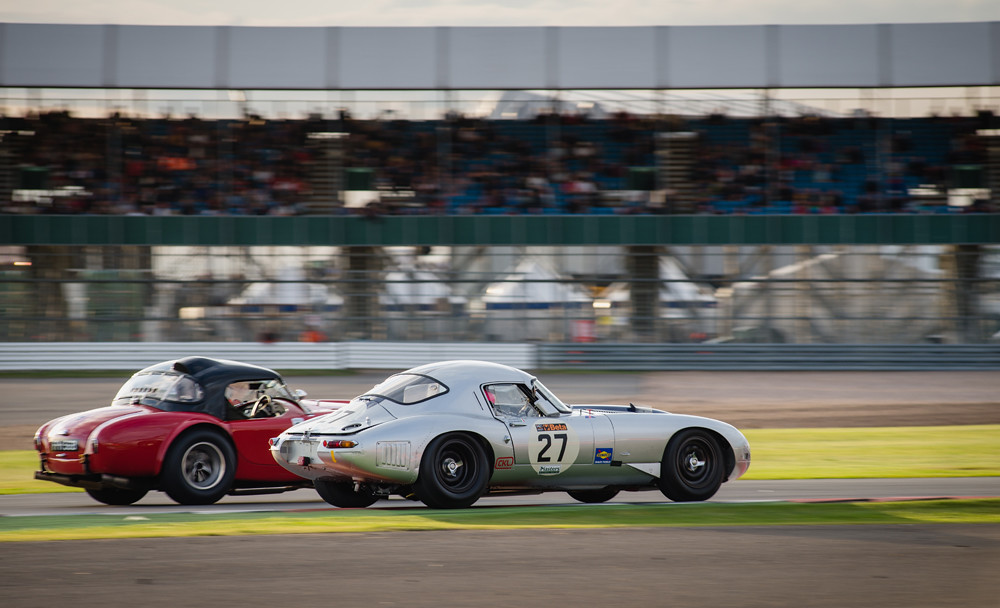
1. **Jaguar E-Type**When we talk about automotive elegance and performance, the Jaguar E-Type inevitably rises to the top, widely regarded as one of the most beautiful cars ever built. Its breathtaking aesthetics were so profound that even Enzo Ferrari himself allegedly declared it “the most beautiful car ever made.” While Jaguar has offered glimpses of its timeless appeal through continuation models, a full-scale reboot of the E-Type for the modern age remains an enthralling prospect, promising a blend of its iconic charm with contemporary engineering.
The Series 1 and Series 2 models, in particular, are the most admired iterations, characterized by their unmistakably sleek lines, gleaming chrome bumpers, and the heart of the beast: the legendary XK inline-six engine. This powertrain, available in 3.8-liter or 4.2-liter displacements, wasn’t just a technical marvel for its time; it was a symbol of Jaguar’s commitment to both artistry and mechanical prowess, delivering an experience that was as exhilarating as it was beautiful.
Indeed, the E-Type was far more than just a pretty face. With the 4.2-liter engine producing a robust 265 horsepower, it possessed the performance credentials to match its stunning looks. This car was designed not merely to be admired but to be driven with spirit, carving through corners and devouring open roads with a captivating blend of speed and agility that few contemporaries could rival, embodying the very essence of a grand tourer.
A modern reboot, therefore, presents an irresistible opportunity to elevate this icon. Imagine its classic silhouette reimagined with today’s advanced materials and aerodynamic principles, powered by a state-of-the-art, perhaps electrified, powertrain that respects its heritage while embracing the future. Such a rebirth, meticulously crafted to honor its legacy while incorporating cutting-edge technology, could make the E-Type even more spectacular than its revered predecessor, captivating both purists and new enthusiasts alike.
Car Model Information: 1971 Jaguar E-Type Restomod
Sp: uk
Name: Jaguar E-Type
Caption: 1961 E-Type Series 1 3.8-Litre, the first production model of this open two-seater
Aka: Jaguar XK-E , Jaguar V-12
Manufacturer: Jaguar Cars
Production: 1961–1974
Class: Sports car
Predecessor: Jaguar XK150
Related: Jaguar D-Type,Jaguar XJ13
Successor: Jaguar XJS
Layout: FMR layout
Assembly: Coventry,England
Designer: Malcolm Sayer
Categories: 1970s cars, 2+2 coupés, All articles with dead external links, All articles with specifically marked weasel-worded phrases, All articles with unsourced statements
Summary: The Jaguar E-Type, or the Jaguar XK-E for the North American market, is a British front mid-engined sports car that was manufactured by Jaguar Cars Ltd from 1961 to 1974. Its sleek appearance, advanced technologies, high performance, and competitive pricing established it as an icon. The E-Type’s claimed 150 miles per hour (240 km/h) top speed, sub-7-second 0 to 60 mph (97 km/h) acceleration, largely unitary body construction, front and rear independent suspension with disc brakes, mounted inboard at the rear, and rack-and-pinion steering spurred industry-wide changes.
The E-Type was based on Jaguar’s D-Type racing car, which had won the 24 Hours of Le Mans for three consecutive years beginning in 1955.
The E-Type employed what was, for the early 1960s, a novel design principle, with a front subframe carrying the engine, front suspension and front bodywork bolted directly to the body tub. No ladder frame chassis, as was common at the time, was needed and as such the first cars weighed only 1,315 kg (2,899 lb).
It is rumored that, on its debut on 15 March 1961, Enzo Ferrari called it “the most beautiful car ever made”, but this statement is not fully confirmed. In 2004, Sports Car International magazine placed the E-Type at number one on their list of Top Sports Cars of the 1960s. In March 2008, the Jaguar E-Type ranked first in The Daily Telegraph’s online list of the world’s “100 most beautiful cars” of all time.
Get more information about: Jaguar E-Type
Buying a high-performing used car >>>
Brand: Jaguar Model: E-Type
Price: $64,900 Mileage: 2,455 mi.
Read more about: Boomers, Get Ready to Rev! These 12 Iconic ’60s Car Models Still Drive Our Dreams
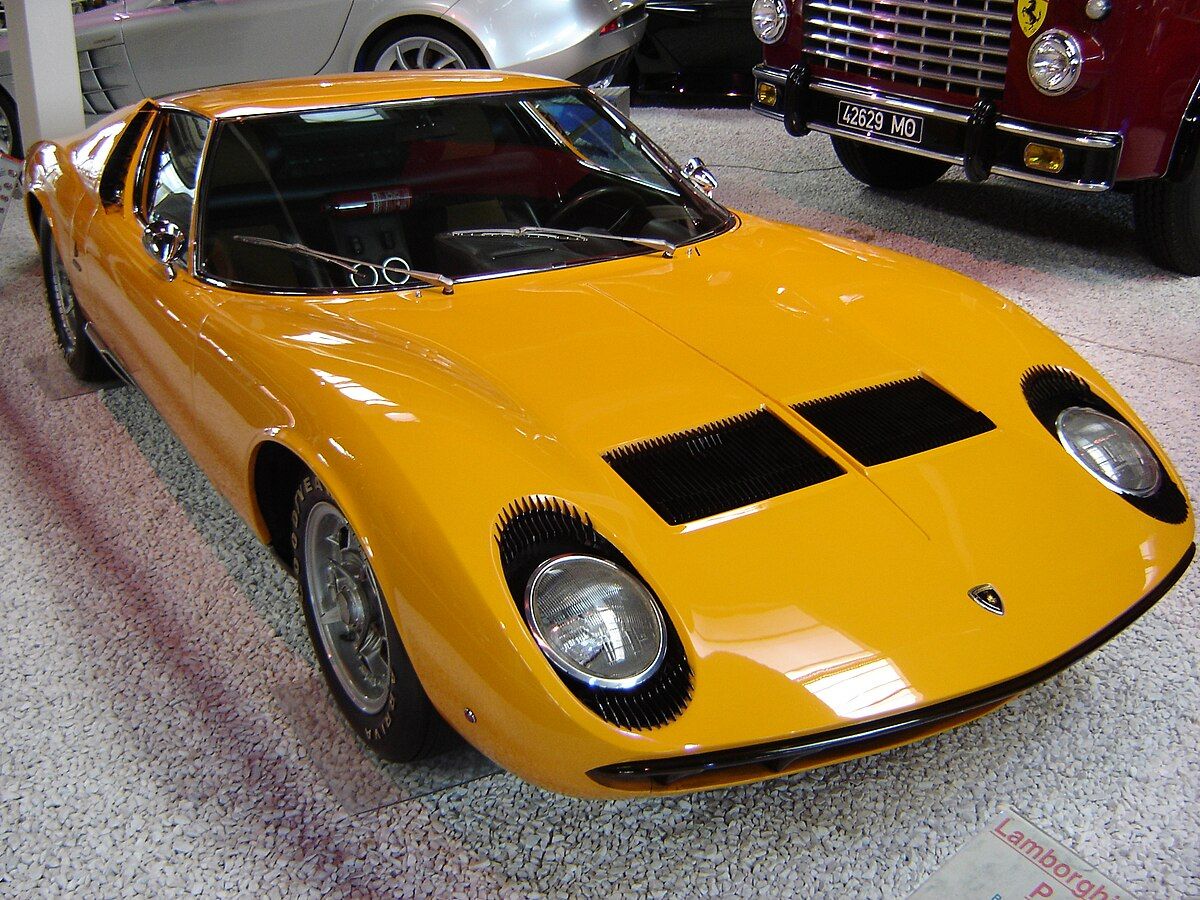
2. **Lamborghini Miura**If there is one supercar that unequivocally demands a modern revival, it is the Lamborghini Miura. This automotive masterpiece, shrouded in secrecy during its development by Lamborghini’s visionary engineers, initially faced skepticism from Ferruccio Lamborghini himself. However, his reservations evaporated upon witnessing the finished product, a car so revolutionary that it didn’t just join the supercar segment; it arguably defined it, setting a new benchmark for performance and design.
At its heart, the Miura was propelled by a formidable 3.9-liter V12 engine, which in its early guises delivered an impressive 345 horsepower. This wasn’t merely a fast car for its era; it was a groundbreaking machine that shattered conventions. Its blistering speed was only one facet of its revolutionary nature; it was the entire package that re-wrote the rulebook for high-performance automotive design.
The Miura’s most enduring legacy lies in its radical, low-slung, mid-engine layout. This configuration was a revelation, fundamentally altering the trajectory of performance car design forever. It offered a dynamic balance and an aesthetic that was both aggressive and stunningly beautiful, instantly making all other sports cars seem instantly antiquated. The unmistakably sleek, wedge-shaped profile became an icon, a visual signature that spoke volumes about its capabilities.
A modern Miura would be nothing short of breathtaking, a seamless fusion of its original, unforgettable wedge shape with contemporary advancements. Envision cutting-edge aerodynamics enhancing its already potent form, married to Lamborghini’s latest V12 powerplant, perhaps augmented with hybrid technology, to deliver unparalleled performance while adhering to modern standards. Such a vehicle would not just be a car; it would be a vibrant, roaring testament to the enduring spirit of innovation and passion that birthed the original legend.
Read more about: Revving Through History: The 14 Unforgettable Machines That Defined the Roaring Sixties Automotive Era
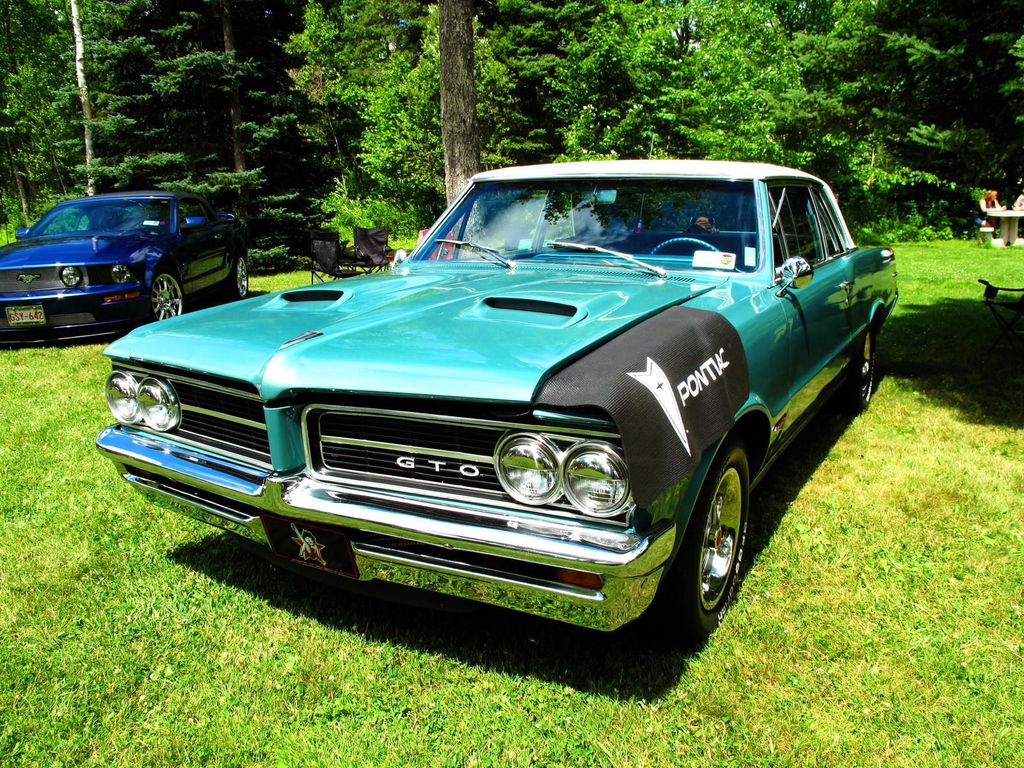
3. **1964 Pontiac GTO**The discussion around the true genesis of the muscle car movement often sparks fervent debate among enthusiasts, yet few would dispute the seminal role played by the 1964 Pontiac GTO. This vehicle didn’t just participate in the nascent muscle car scene; it decisively kicked off the entire phenomenon. Its creation was audacious and brilliantly simple: take a humble midsize Pontiac LeMans and audaciouslly drop in a massive 6.4-liter V8 engine, allowing the raw, untamed horsepower to speak for itself.
With an available output of up to 325 horsepower, channeled through a four-speed manual transmission, the original GTO wasn’t just powerful; it was a statement. It meticulously set the benchmark for what a muscle car ought to be: a potent combination of brute force, accessible performance, and undeniable street presence. It embodied the American spirit of excess and exhilaration, defining an entire genre that would captivate a generation and leave an indelible mark on automotive history.
In an automotive landscape where the traditional muscle car is gradually shifting towards electrification, a modern reboot of the GTO with its cherished retro styling, concealing a potent, thoroughly modern V8 engine under its hood, could be an absolute sensation. It would offer a vital connection to the genre’s golden age, providing a visceral, unadulterated driving experience that many enthusiasts crave amidst the silent hum of electric powertrains. The roar of a V8, coupled with classic lines, would resonate profoundly.
Such a throwback to the GTO’s golden age would not only satisfy the deep-seated nostalgia of long-time fans but also introduce a new generation to the unbridled thrill of American muscle. It represents a potent antidote to the sometimes-clinical nature of modern performance, offering a raw, engaging, and deeply emotive driving proposition that could be exactly what enthusiasts need to reignite their passion and connect with automotive heritage in a meaningful way.
Car Model Information: 1966 Pontiac GTO Coupe
Name: Pontiac GTO
Caption: 2005 Pontiac GTO
Manufacturer: Pontiac (automobile),Holden
Class: Mid-size car,Compact car,Mid-size car
Production: 1963–1974,2003–2006
Predecessor: Pontiac Tempest
Layout: Front-engine, rear-wheel-drive layout
ModelYears: 1964-1974 2004-2006
Categories: 1970s cars, 2000s cars, All articles with unsourced statements, Articles with short description, Articles with unsourced statements from October 2008
Summary: The Pontiac GTO is a front-engine, rear-drive, two-door, and four-passenger automobile manufactured and marketed by the Pontiac division of General Motors over four generations from 1963 until 1974 in the United States — with a fifth generation made by GM’s Australian subsidiary, Holden, for the 2004 through 2006 model years.
The first generation of the GTO is credited with popularizing the muscle car market segment in the 1960s. Some consider the Pontiac GTO to have started the trend with all four domestic automakers offering a variety of competing models.
For the 1964 and 1965 model years, the GTO was an optional package on the intermediate-sized Pontiac LeMans. The 1964 GTO vehicle identification number (VIN) started with 22, while the 1965 GTO VIN began with 237. The GTO was designated as a separate Pontiac model from 1966 through 1971 (VIN 242…). It became an optional package again for the 1972 and 1973 intermediate LeMans. For 1974, the GTO was an optional trim package on the compact-sized Ventura.
The GTO model was revived for the 2004 through 2006 model years as a captive import for Pontiac, a left-hand drive version of the Holden Monaro, itself a coupé variant of the Holden Commodore.
Get more information about: Pontiac GTO
Buying a high-performing used car >>>
Brand: Pontiac Model: GTO
Price: $59,991 Mileage: 4,408 mi.
Read more about: Boomers, Get Ready to Rev! These 12 Iconic ’60s Car Models Still Drive Our Dreams
4. **First-Generation Ford Mustang**The Ford Mustang stands as an undeniable icon, its presence in the automotive world enduring through decades. While the Mustang nameplate continues to thrive with each new generation, the idea of a factory-built tribute, a faithful reinterpretation of the very first generation, sparks a unique kind of excitement. When it first burst onto the scene in 1964, the Mustang didn’t just debut a new car; it single-handedly introduced the world to the concept of the ‘pony car,’ sparking a cultural phenomenon and birthing a movement that continues to run strong today.
The original first-generation Mustang was an instant classic, characterized by its perfectly proportioned design: a distinctive long hood paired with a short, sporty deck. This aesthetic, combined with the availability of robust V8 power, tapped into the desires of a burgeoning youth market, instantly cementing its status as a legend. Its universal appeal lay in its blend of sporty looks, customizable options, and attainable performance, making it a dream car for millions.
Ford consistently pushed the boundaries with special editions that amplified the Mustang’s performance credentials, with models like the legendary Boss 429 taking it to stratospheric new levels. These high-performance variants showcased the platform’s versatility and its capability to transform from a stylish cruiser into a formidable track weapon, cementing its performance pedigree and captivating drag strip aficionados and street racers alike.
A modern reboot of that original design, meticulously rendered with today’s advanced manufacturing techniques, could be truly magical. Imagine a return to its timeless retro styling, perhaps with a naturally aspirated V8 engine under the hood, tuned for a soulful exhaust note and linear power delivery, harking back to a purer driving experience. Such a vehicle would effortlessly bring back the magic that made the early Mustangs so incredibly iconic, allowing a new generation to experience the essence of American automotive freedom.
Car Model Information: 2016 Ford Mustang GT Premium
Name: Ford Mustang
Caption: 2024 Ford Mustang GT Convertible
Aka: Ford T5 (Germany)
Manufacturer: Ford Motor Company
Production: March 1964 – present
ModelYears: 1965–present
Class: Unbulleted list
BodyStyle: Unbulleted list
Layout: Front-engine, rear-wheel-drive layout
Categories: 1970s cars, 1980s cars, 1990s cars, 2+2 coupés, 2000s cars
Summary: The Ford Mustang is an American automobile manufactured and marketed by Ford since 1964, as Ford’s longest nameplate in continuous production. Currently in its seventh generation, it is the fifth-best selling Ford car nameplate. The namesake of the “pony car” automobile segment, the Mustang was developed as a highly styled line of sporty coupes and convertibles derived from existing model lines, initially distinguished by its pronounced “long hood, short deck” proportions.
Originally predicted to sell 100,000 vehicles yearly, the 1965 Mustang became the most successful vehicle launch since the 1927 Model A. Introduced on April 17, 1964 (16 days after the Plymouth Barracuda), over 400,000 units were sold in its first year; the one-millionth Mustang was sold within two years of its launch. In August 2018, Ford produced the 10-millionth Mustang; matching the first 1965 Mustang, the vehicle was a 2019 Wimbledon White convertible with a V8 engine.
The success of the Mustang launch led to multiple competitors from other American manufacturers, including the Chevrolet Camaro and Pontiac Firebird (1967), AMC Javelin (1968), and Dodge Challenger (1970). It also competed with the Plymouth Barracuda, which was launched around the same time. The Mustang also had an effect on designs of coupes worldwide, leading to the marketing of the Toyota Celica and Ford Capri in the United States (the latter, by Lincoln-Mercury). The Mercury Cougar was launched in 1967 as a unique-bodied higher-trim alternative to the Mustang; during the 1970s, it included more features and was marketed as a personal luxury car.
From 1965 until 2004, the Mustang shared chassis commonality with other Ford model lines, staying rear-wheel-drive throughout its production. From 1965 to 1973, the Mustang was derived from the 1960 Ford Falcon compact. From 1974 until 1978, the Mustang (denoted Mustang II) was a longer-wheelbase version of the Ford Pinto. From 1979 until 2004, the Mustang shared its Fox platform chassis with 14 other Ford vehicles (becoming the final one to use the Fox architecture). Since 2005, Ford has produced two generations of the Mustang, each using a distinct platform unique to the model line.
Through its production, multiple nameplates have been associated with the Ford Mustang series, including GT, Mach 1, Boss 302/429, Cobra (separate from Shelby Cobra), and Bullitt, along with “5.0” fender badging (denoting 4.9 L OHV or 5.0 L DOHC V8 engines).
Get more information about: Ford Mustang
Buying a high-performing used car >>>
Brand: Ford Model: Mustang
Price: $25,000 Mileage: 95,782 mi.
Read more about: Boomers, Get Ready to Rev! These 12 Iconic ’60s Car Models Still Drive Our Dreams
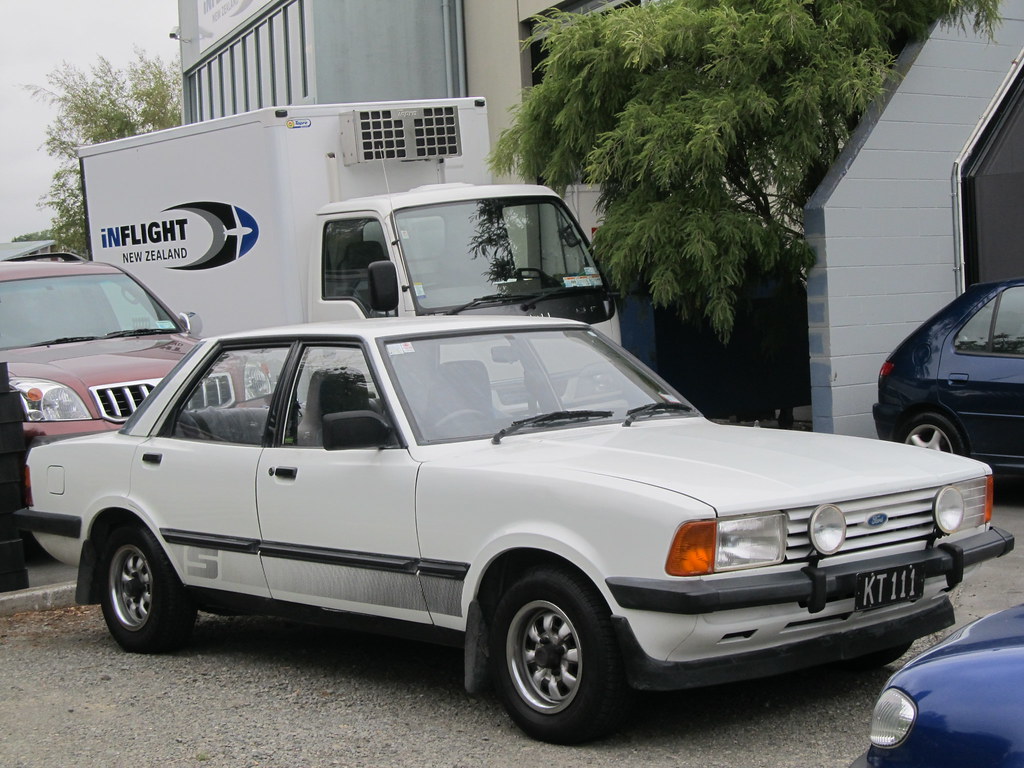
5. **Ford Cortina**The Ford Cortina, in contrast to the high-octane supercars and raw muscle machines, carved out its own unique niche as a profound cultural icon. It wasn’t designed to be a track monster or a quarter-mile king, yet its impact was undeniable. As one of the United Kingdom’s best-selling cars throughout the 1960s and 1970s, it became an omnipresent staple on British roads, cherished for its remarkable balance of affordability, unwavering reliability, and an engaging, fun-to-drive character that resonated with everyday motorists.
While its basic design might not have been inherently groundbreaking in an aesthetic sense, the Cortina’s true genius lay in its practical brilliance and surprising versatility. It proved its mettle not just as a dependable family car, but also remarkably on the racetrack. Here, the Cortina defied expectations, courageously taking on and often besting much larger, ostensibly more powerful cars, including its stablemate the Mustang, in intense touring car racing events, cementing its underdog legend.
This unexpected racing prowess highlighted a crucial aspect of the Cortina’s appeal: its inherent lightweight, nimble chassis, and an accessible driving dynamic that made it a joy behind the wheel. It represented an era where engaging driving wasn’t exclusive to exotic machinery but was available to the masses, providing an honest, unpretentious connection between driver and road, a quality often missed in today’s increasingly digital automotive landscape.
A modern interpretation of the Ford Cortina, therefore, could perfectly recapture that spirited, lightweight, and fun-to-drive essence. Such a vehicle would offer enthusiasts a genuinely affordable and thoroughly engaging alternative to the increasingly bloated and often overly complex sedans prevalent in today’s market. It could resurrect the joy of simple, direct driving, proving that sometimes, less truly is more, and that an icon can be both humble and exhilarating.
Read more about: Rev Up Your Portfolio: 14 Classic Muscle Cars Middle-Class Enthusiasts Can Afford for Unrivaled Fun and Smart Investment
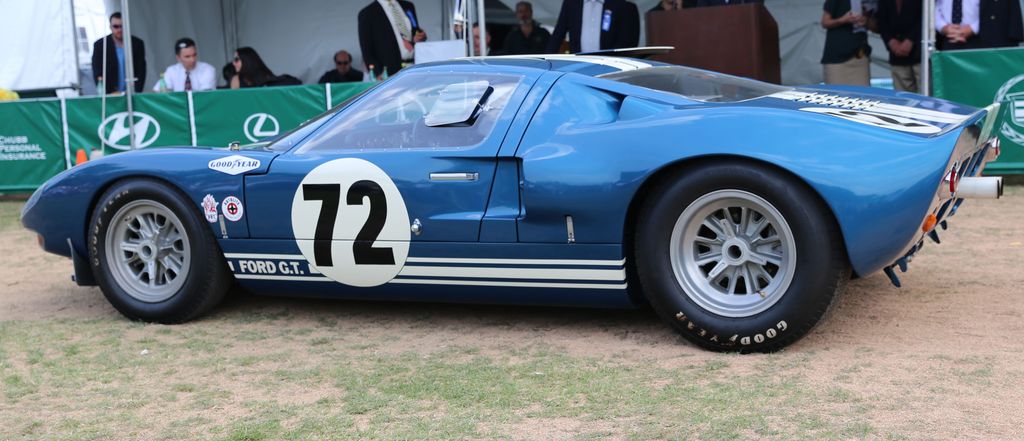
6. **Ford GT40**When discussions turn to the most deserving candidates for a 1960s automotive revival, the Ford GT40 invariably sits at the pinnacle of that list. While Ford has, in recent times, indeed built impressive modern supercars that draw inspiration from the original, a critical element remains elusive: none have quite managed to fully capture the raw, unadulterated essence of the Le Mans-dominating legend. The GT40 was more than a car; it was a declaration, a machine forged in the crucible of fierce competition.
The GT40’s very existence was born from one of motorsport’s most legendary rivalries: Ford versus Ferrari. Designed with a singular, unyielding purpose—to conquer the grueling 24 Hours of Le Mans—it achieved this monumental goal not just once, but an astounding four consecutive times, from 1966 through 1969. This unparalleled winning streak cemented its place in history, transforming it into a symbol of American engineering prowess and unwavering determination.
Powered by a series of mighty V8 engines, the GT40 was an engineering marvel, a testament to the pursuit of speed and endurance. Its distinctive, low-slung profile and formidable presence on the track made it one of the most iconic race cars ever conceived. Every curve, every vent, and every inch of its design was optimized for aerodynamic efficiency and devastating performance, making it a true weapon of motorsport.
A modern reboot of the GT40, therefore, holds immense promise, but only if it stays rigorously true to its lightweight, uncompromisingly race-focused roots. Such a vehicle, eschewing unnecessary luxuries and prioritizing an unadulterated driving experience, could be nothing short of a game-changer. It would not merely be a tribute; it would be a living, breathing continuation of a legend, a high-octane machine that thrills with its performance and reveres its formidable heritage, delivering a visceral connection to its glorious past.
Car Model Information: 1966 Ford GT40
Name: Ford GT40
Caption: Ford GT40 Mk.I in JWA Gulf Oil racing colors
Manufacturer: Ford Advanced Vehicles,John Wyer,Kar Kraft,Holman-Moody,Shelby American
Production: 1964–1969
Assembly: Slough,Los Angeles
Designer: Ron Bradshaw
Class: Group 4 (racing),Group 5 (racing),Group 6 (racing)
BodyStyle: coupé
Layout: MR layout
Engine: Cubic inch,289 CID (4737 cc) V-8,302 CID (4942 cc) V-8,427 CID (6997 cc) V-8
Transmission: Manual transmission
Wheelbase: 95 in
Abbr: on
Length: 160 in
Width: 70 in
Height: 40.5 in
Weight: convert
Successor: Ford P68
Sp: uk
Categories: 24 Hours of Le Mans race cars, All Wikipedia articles needing clarification, All articles needing additional references, All articles that may contain original research, All articles with specifically marked weasel-worded phrases
Summary: The Ford GT40 is a high-performance mid-engined racing car originally designed and built for and by the Ford Motor Company to compete in 1960s European endurance racing and the World Sportscar Championship. Its specific impetus was to beat Scuderia Ferrari, which had won the prestigious 24 Hours of Le Mans race for six years running from 1960 to 1965. As rules of the time required that GT cars were built in dozens and sold, around 100 cars in total have been made, mostly as 289 cu in (4.7 L) V8-powered Mk Is, of which at least 50 were made in 1965, which allowed FIA-homologation as Group-4-Sportscar for 1966 until 1971. This gave the old MK.I car of Gulf-Wyer the chance to enter and win Le Mans in 1968 and 1969 after prototypes had been limited to 3 litre, with the performance of the Ford 7-litre-V8 in the factory 1966 Mk.II and 1967 Mk.IV prototypes causing this rule change, which also banned the 4-litre V12 Ferrari 330P4 and others after 1967. The Mk.III designation was used for some road-legal cars.
The Ford GT40 debuted in 1964, and improvements in 1965 led to Ford winning World Championships categories from 1966 to 1968. The first Le Mans win came in 1966 with three 427 cu in (7.0 L) powered Mk.II prototypes crossing the finish line together, the second in 1967 with the same engine now in quite different US-built Mk.IV prototype chassis similar to the “J-car” mule. In order to lower ever-higher race top speeds, a rule change from 1968 onwards limited prototypes to 3.0 litre Formula 1 engines; the sportscar “loophole”, however, allowed the private JW “Gulf Oil” team to win at Le Mans in 1968 and 1969 running a Mk.I with a 5.0 litre engine.
The GT40 effort began in Britain in the early 1960s when Ford Advanced Vehicles began to build the Mk I, based upon the British Lola Mk6, in Slough, UK. After disappointing race results, the engineering team was moved in 1964 to Dearborn, Michigan, US, to design and build cars by its advanced developer, Kar Kraft. All chassis versions were powered by a series of American-built Ford V8 OHV engines modified for racing.
In the 1966 Le Mans, the GT40 Mk II car broke Ferrari’s winning streak, making Ford the first American manufacturer to win a major European race since Jimmy Murphy’s Duesenberg in the 1921 French Grand Prix. In the 1967 Le Mans, the GT40 Mk IV car became the only car developed and assembled entirely (both chassis and engine) in the United States to achieve the overall win at Le Mans.
Get more information about: Ford GT40
Buying a high-performing used car >>>
Brand: Ford Model: GT40
Price: $110,000 Mileage: 13,350 mi.
Read more about: Dwayne ‘The Rock’ Johnson Stuns Fans with Unrecognizable New Look: A Deep Dive into His Career Evolution and Coveted Car Collection

7. **Ferrari 250 GTO**No comprehensive roster of legendary 1960s automobiles could ever truly be considered complete without the inclusion of the illustrious Ferrari 250 GTO. Built over an incredibly brief span, from 1962 to 1964, its scarcity is a cornerstone of its legend: a mere 36 examples were ever produced. This extraordinarily limited production run immediately elevated it to a status as one of the rarest, and consequently, one of the most astronomically valuable cars to have ever existed in the entire world.
Beneath its exquisitely sculpted bodywork resided a formidable 3.0-liter Tipo V12 engine, a masterpiece of Italian engineering that churned out an impressive 296 horsepower. This powertrain, coupled with its advanced chassis, made the 250 GTO an undeniable force in endurance racing, where it routinely dominated its competition. Its combination of breathtaking performance and unparalleled beauty cemented its status not just as a racing champion, but also as an object of desire for connoisseurs and collectors alike.
The almost mythical desirability of the 250 GTO is vividly underscored by its breathtaking market value. In 2018, one of these automotive treasures commanded an astonishing $70 million at auction, a figure that starkly illustrates just how coveted and revered these vehicles remain. This record-breaking sale only amplified its legend, making it clear that owning a 250 GTO is not merely acquiring a car, but investing in a piece of automotive history and art.
A modern reinterpretation of the Ferrari 250 GTO presents an intriguing proposition: how to honor such an untouchable icon. Such a project could ingeniously blend its classic, unmistakable styling with Ferrari’s very latest hybrid technology, ensuring both blistering performance and a nod to contemporary environmental concerns. This visionary approach would allow its spirit to live on, accessible to a new generation of enthusiasts, offering a blend of timeless beauty and future-forward innovation, without diluting the mystique of the original masterpiece.
Car Model Information: 2022 Honda Civic Sport
Name: Ferrari 250 GTO
Caption: 1963 Ferrari 250 GTO (chassis 4153GT)
Manufacturer: Ferrari
Production: 1962–1964,(36 produced)
Designer: Giotto Bizzarrini,Scaglietti
Class: Sports car
BodyStyle: berlinetta
Related: Ferrari 330#330 LMB,Ferrari P#250 LM
Layout: FR layout
Engine: 2,953 cc,Ferrari Colombo engine#250,Overhead camshaft#Single Overhead camshatf,Weber carburetor,Compression ratio
Powerout: 300 PS
Abbr: on
Order: flip @ 5500 rpm
Transmission: Manual transmission
Wheelbase: 2400 mm
Length: 4325 mm
Width: 1600 mm
Height: 1210 mm
Weight: convert
Predecessor: Ferrari 250 GT SWB
Successor: Ferrari 250 LM,Ferrari 288 GTO
Categories: All articles lacking reliable references, All articles needing additional references, All articles with bare URLs for citations, All articles with unsourced statements, Articles lacking reliable references from March 2022
Summary: The Ferrari 250 GTO is a grand tourer produced by Ferrari from 1962 to 1964 for homologation into the FIA’s Group 3 Grand Touring Car category. It was powered by Ferrari’s Tipo 168/62 Colombo V12 engine. The “250” in its name denotes the displacement in cubic centimeters of each of its cylinders; “GTO” stands for Gran Turismo Omologato, Italian for “Grand Touring Homologated”.
Just 36 of the 250 GTOs were manufactured between 1962 and 1964. This includes 33 cars with 1962–63 bodywork (Series I) and three with 1964 (Series II) bodywork similar to the Ferrari 250 LM. Four of the older 1962–1963 (Series I) cars were updated in 1964 with Series II bodies.
When new, the 250 GTO cost $18,000 in the United States, with buyers personally approved by Enzo Ferrari and his dealer for North America, Luigi Chinetti. This model has since become highly desired by automobile collectors and sales have repeatedly set price records. The current record for world’s most expensive Ferrari was set in June 2018 when a 1963 250 GTO (chassis 4153GT) was sold in a private sale for $70 million.
In 2004, Sports Car International placed the 250 GTO eighth on their list of Top Sports Cars of the 1960s, and nominated it the top sports car of all time. Similarly, Motor Trend Classic placed the 250 GTO first on a list of the “Greatest Ferraris of All Time”. Popular Mechanics named it the “Hottest Car of All Time”.
Get more information about: Ferrari 250 GTO
Buying a high-performing used car >>>
Brand: Ferrari Model: 250 GTO
Price: $25,849 Mileage: 16,061 mi.
Read more about: The Ultimate Nineties Rewind: 15 Coolest Cars of the Decade That Still Fuel Our Automotive Dreams
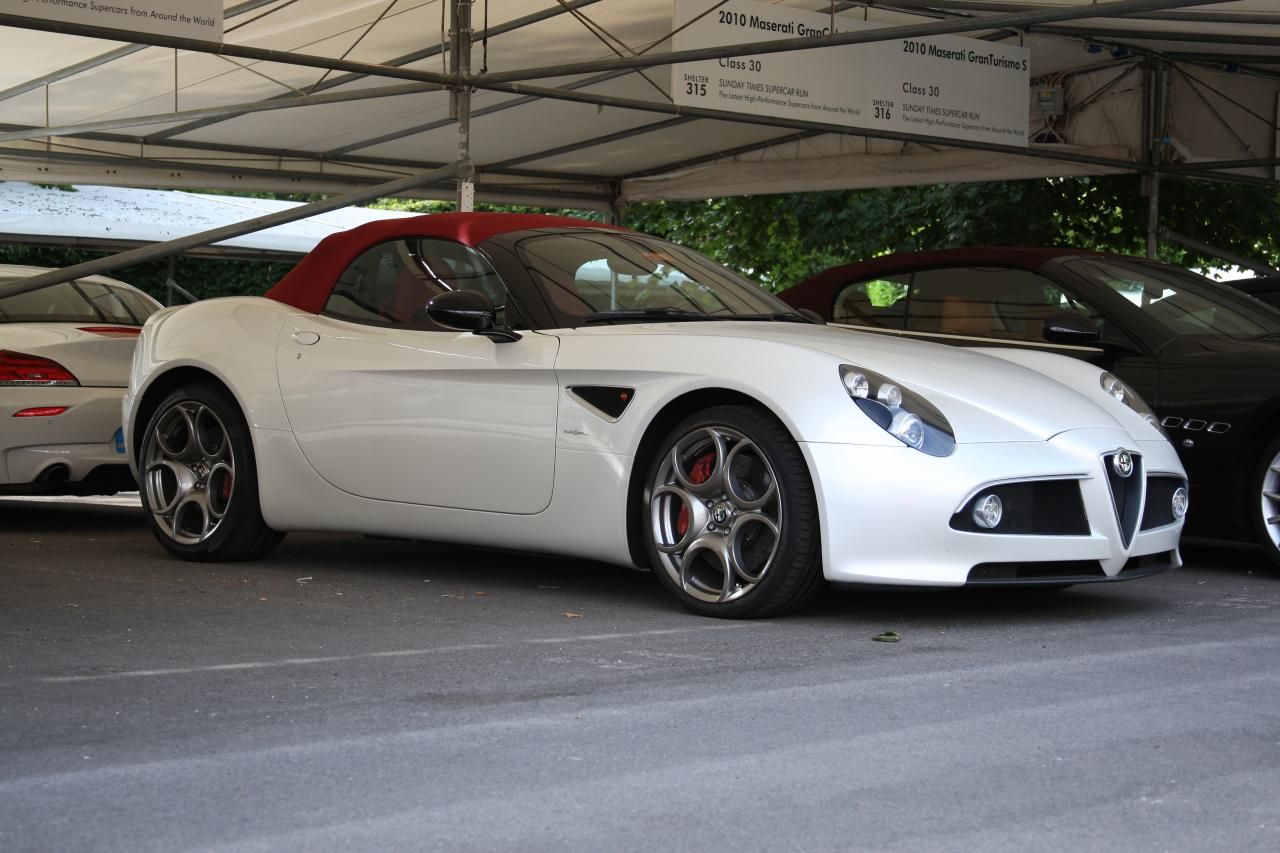
8. **Alfa Romeo Spider**The Alfa Romeo Spider stands as one of the most instantly recognizable sports cars ever conceived, its elegant form etched into popular culture, notably through its memorable appearance in “The Graduate.” Introduced in 1966, this captivating roadster masterfully blended an unmistakably stunning design with the spirited, communicative driving character that has always been the hallmark of Alfa Romeo. It wasn’t just a car; it was an embodiment of Italian automotive passion.
Initially powered by a lively 1.6-liter engine, later models received more potent powertrains, enhancing its already engaging performance. While the build quality of its era occasionally drew critique, such details were often overlooked by enthusiasts who were utterly captivated by the car’s sheer driving joy and its evocative design. The Spider offered an unfiltered connection to the road, a quality cherished by purists.
The prospect of a new Alfa Romeo Spider is incredibly enticing. A modern iteration, meticulously crafted to honor its classic, flowing lines while integrating cutting-edge performance and contemporary reliability, would represent a truly welcome return. Such a vehicle could once again remind us of the visceral pleasure of open-top motoring, perfectly fusing heritage with the demands of the modern driver.
Car Model Information: 2022 Honda Civic Sport
Name: Alfa Romeo Spider
Caption: Alfa Romeo Spider Series 2 (“Coda Tronca”)
Aka: Alfa Romeo “Duetto”
Manufacturer: Alfa Romeo
Assembly: Grugliasco,Turin
Production: 1966–1993
ModelYears: 1966–1994
Class: Sports car
Layout: Front-engine, rear-wheel-drive layout
BodyStyle: Roadster (automobile)
Related: Alfa Romeo Giulia,Alfa Romeo 105/115 Series Coupés
Designer: Aldo Brovarone
Predecessor: Alfa Romeo Giulietta (750/101)
Successor: Alfa Romeo GTV & Spider
Sp: uk
Categories: 1970s cars, 1980s cars, 1990s cars, Alfa Romeo vehicles, All articles needing additional references
Summary: The Alfa Romeo Spider (105/115 series) is a two-seater, front-engined, rear-drive roadster manufactured and marketed by Alfa Romeo from 1966 to 1994 in four distinct generations, or “series”, each with modifications ranging from modest to extensive.
As successor to the Giulia Spider, the Spider remained in production for almost three decades. The first three series were assembled by Pininfarina in Grugliasco and the fourth series in San Giorgio Canavese. The last Spider of that series was manufactured in April 1993—the last rear-wheel drive Alfa Romeo before the Alfa Romeo 8C Competizione of 2007.
In 2012, FCA Italy and Mazda studied the possibility of jointly developing a new Spider for 2015 based on the Mazda MX-5 platform. Ultimately, FCA and Mazda chose to manufacture a modern interpretation of the Fiat 124 Sport Spider rather than reviving the Alfa Romeo Spider.
Get more information about: Alfa Romeo Spider
Buying a high-performing used car >>>
Brand: Alfa Romeo Model: Spider
Price: $25,849 Mileage: 16,061 mi.
Read more about: Beyond the Luster: 15 Luxury Cars That Dazzle Visually But Disappoint Behind the Wheel, According to Owners and Experts

9. **Ferrari 365 GTB/4 Daytona**When Lamborghini unveiled its revolutionary mid-engined Miura, Ferrari, never one to shy from a challenge, responded with an equally formidable machine: the 365 GTB/4 Daytona. This front-engined grand tourer was Maranello’s powerful counterpoint, engineered to not only compete with but also surpass its avant-garde rival in terms of raw speed and enduring appeal, asserting Ferrari’s traditional engineering prowess.
At the heart of this majestic beast resided a magnificent 4.4-liter Colombo V12 engine, a masterpiece of Italian engineering that commanded an impressive 347 horsepower. This formidable powerplant ensured the Daytona possessed ample force to match its name, making it one of the fastest production cars of its time. Beyond its mechanical might, the Daytona was a visual tour de force, its long, aggressive lines and sweeping profile exuding an undeniable aura of power and sophistication.
A modern reimagining of the Daytona holds immense promise for today’s discerning enthusiasts. Envision a new model with an updated, naturally aspirated V12 engine, meticulously tuned for a glorious exhaust note and exhilarating power delivery, wrapped in classic-inspired styling that pays homage to its iconic predecessor. Such a vehicle could easily redefine the modern grand tourer, establishing itself as one of the most celebrated Ferraris of our era.
Car Model Information: 2022 Maserati Levante GT
Name: Ferrari 365 GTB/4,and GTS/4 “Daytona”
Caption: 1973 Ferrari 365 GTB/4
Manufacturer: Ferrari
Production: GTB/4: 1968–1973 (1,284 produced),GTS/4: 1971–1973 (122 produced)
Assembly: Maranello
Designer: Leonardo Fioravanti (engineer)
Class: Grand tourer
BodyStyle: berlinetta,Roadster (automobile)
Layout: Front-engine, rear-wheel-drive layout
Engine: Ferrari Colombo engine,V12 engine
Transmission: Manual transmission
Wheelbase: 2400 mm
Abbr: on (GTB/4, dry)
Length: 4425 mm
Width: 1760 mm
Height: 1245 mm
Weight: 1200 kg
Predecessor: Ferrari 275#275 GTB/4,Ferrari 365#365 GTC/GTS
Successor: Ferrari Berlinetta Boxer,Ferrari 550 Maranello
Sp: uk
Categories: 1970s cars, All articles with unsourced statements, Articles with hAudio microformats, Articles with short description, Articles with unsourced statements from April 2021
Summary: The Ferrari Daytona is a two-seat grand tourer produced by Ferrari from 1968 to 1973. It was introduced at the Paris Auto Salon in 1968 to replace the 275 GTB/4, and featured the 275’s Colombo V12 with a larger cylinder bore for 4,390 cc (4.4 L; 267.9 cu in). It was offered in berlinetta and spyder forms. The car came in two variants: the 365 GTB/4 coupe, and the 365 GTS/4 convertible.
The Daytona was succeeded by the mid-engined 365 GT4 Berlinetta Boxer in 1973.
Get more information about: Ferrari Daytona
Buying a high-performing used car >>>
Brand: Ferrari Model: 365 GTB/4 Daytona
Price: $35,799 Mileage: 16,241 mi.
Read more about: Unleashing the Legends: The 15 Most Valuable 1970s Cars Commanding Top Dollar Today
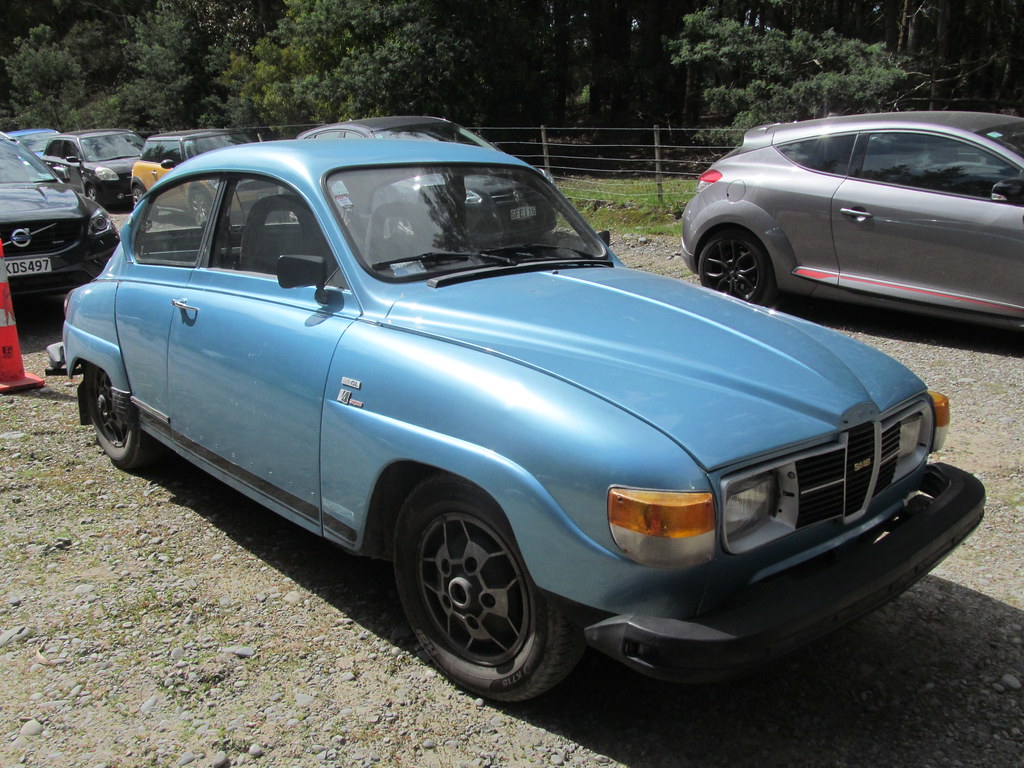
10. **Saab 96**Though the Saab brand may no longer grace new car showrooms, its innovative legacy endures, profoundly defined by vehicles like the indomitable Saab 96. Emerging in 1960 as a sophisticated evolution of the earlier Saab 92, the 96 swiftly forged a reputation for its inherent toughness and unwavering reliability, becoming a stalwart on roads far and wide.
The 96 was remarkably progressive for its time, incorporating features like independent suspension and dual braking systems as early as 1964, demonstrating Saab’s commitment to safety and dynamic excellence. However, it was on the demanding rally stages that the Saab 96 truly cemented its legendary status, consistently punching well above its weight class and frequently outperforming more powerful rivals.
Under the masterful control of rally ace Erik Carlsson, the Saab 96 transformed into an automotive giant killer, demonstrating remarkable agility and resilience. A modern interpretation that faithfully captures this rugged, rally-ready spirit would be a magnificent tribute to Saab’s engineering philosophy. Such a comeback could offer a unique blend of robust design, practical innovation, and engaging performance, appealing to a new generation of drivers seeking a car with genuine character and a storied competitive past.
Car Model Information: 1972 Saab 96 Coupe
Name: Saab 96
Caption: 1972 Saab 96 V4
Manufacturer: Saab Automobile
Production: 1960–1980
Assembly: Trollhättan,Uusikaupunki,Antwerp
Designer: Sixten Sason
Class: Compact car
BodyStyle: sedan (car)
Layout: Front-engine, front-wheel-drive layout
Related: Saab 95,Saab Granturismo
Engine: unbulleted list
Transmission: 3-speed manual,4-speed manual,Saxomat
Wheelbase: 2488 mm
Abbr: on
Length: 4050 mm
Width: 1570 mm
Height: 1473 mm
Weight: convert
Predecessor: Saab 93
Successor: Saab 99
Sp: uk
Categories: 1970s cars, 1980s cars, All articles with dead external links, Articles with dead external links from September 2023, Articles with permanently dead external links
Summary: The Saab 96 is an automobile manufactured and marketed by Swedish automaker Saab from 1960 to January 1980, replacing the Saab 93. The 96 featured aerodynamic two-door bodywork, four-passenger seating and at first a two-stroke, three-cylinder engine, later a four-stroke V4.
Get more information about: Saab 96
Buying a high-performing used car >>>
Brand: Saab Model: 96
Price: $23,900 Mileage: 58,777 mi.
Read more about: Unwavering Dedication: An Engineer’s Multi-Decade Quest to Restore His Dream 1979 Saab 96

11. **Lotus Elan**The Lotus Elan, a marvel of lightweight engineering and sublime handling, represents a truly rare sight on today’s roads, with production figures suggesting only a fraction of the original 3,300 examples remain operational. Launched in 1962, this sporty two-seater was a revelation, marking a pivotal moment in Lotus’s philosophy of performance through lightness.
Its pioneering design, which featured a revolutionary steel backbone chassis married to a sleek fiberglass body, was a testament to Colin Chapman’s visionary engineering. This innovative construction not only kept the weight to an absolute minimum but also endowed the Elan with an exceptionally nimble chassis and highly responsive driving dynamics that few contemporaries could rival. Owners universally adored it, praising its uncanny ability to communicate every nuance of the road.
Produced across two distinct eras, from 1962 to 1975 and again from 1989 to 1995 (though these later models were primarily for the U.K. market), the Elan consistently garnered shining reviews for its pure, unadulterated driving experience. It wasn’t about brute force; it was about precision, balance, and an intimate connection between driver and machine.
A modern revival of the Elan, meticulously preserving its foundational principles of lightness and pure driving engagement, would undoubtedly capture the hearts of a new generation of enthusiasts. Such a vehicle, perhaps powered by a modern, high-revving engine and crafted with advanced composite materials, could once again offer an unadulterated sports car experience. It would be a vibrant testament to its enduring appeal, proving that true driving pleasure transcends horsepower figures.
Read more about: The Ultimate Nineties Rewind: 15 Coolest Cars of the Decade That Still Fuel Our Automotive Dreams
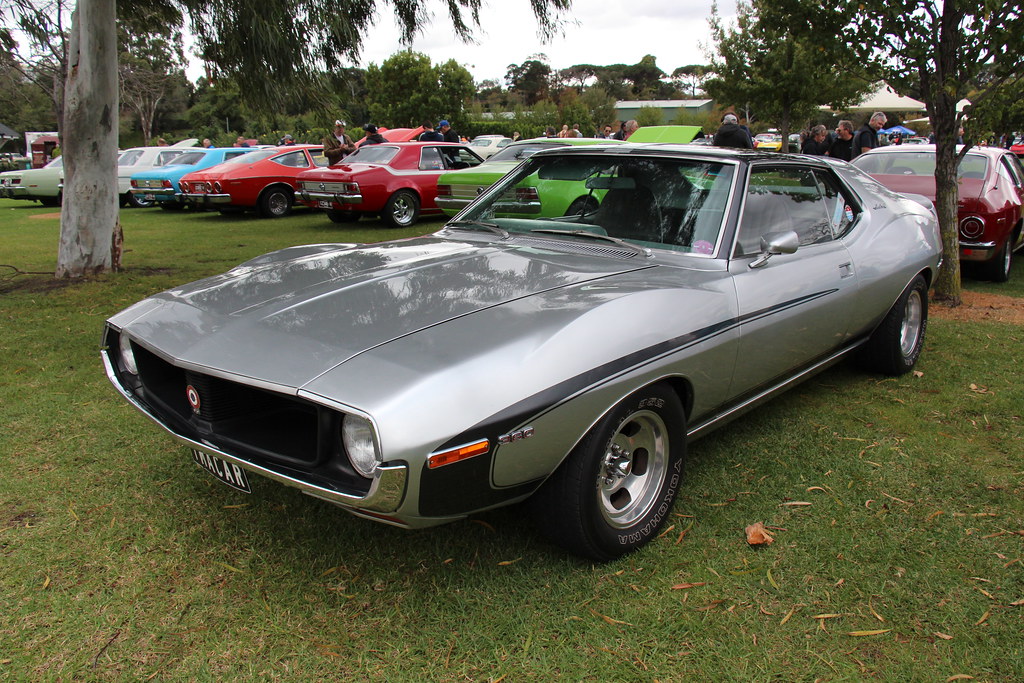
12. **AMC Javelin**The AMC Javelin, produced by the American Motors Corporation from 1967 to 1974, carved a distinctive niche in the American muscle car landscape. It epitomized the era’s robust spirit, featuring classic rear-wheel-drive paired with a potent engine that delivered exhilarating straight-line performance. This “baby” truly “hauled,” as enthusiasts of the period readily attested.
More than just a powerful machine, the Javelin offered a compelling blend of muscle car thrill and surprising practicality. Its affordability, with a baseline price starting at just $2,743 in 1967, made it an accessible dream for many, positioned strategically between traditional pony cars and full-blown muscle titans. This value proposition, combined with its assertive styling, made it a unique and popular choice.
Intriguingly, the Javelin’s robust construction and reliable performance led to its adoption by U.S. police forces as a highway patrol vehicle – a rare feat for a car of its type. This unusual endorsement underscored its inherent durability and its advanced safety features for the time. It highlighted a versatility often overlooked in its powerful muscle car identity.
A contemporary Javelin could make a profoundly significant return, offering a refreshing alternative in today’s performance segment. Envision its classic, aggressive styling reinterpreted with modern aerodynamic principles and infused with cutting-edge chassis dynamics. Powered by a potent, efficient, and perhaps even electrified powertrain, such a vehicle could deliver a visceral driving experience that honors its heritage while fully embracing future technologies.
Read more about: Boomers, Get Ready to Rev! These 12 Iconic ’60s Car Models Still Drive Our Dreams
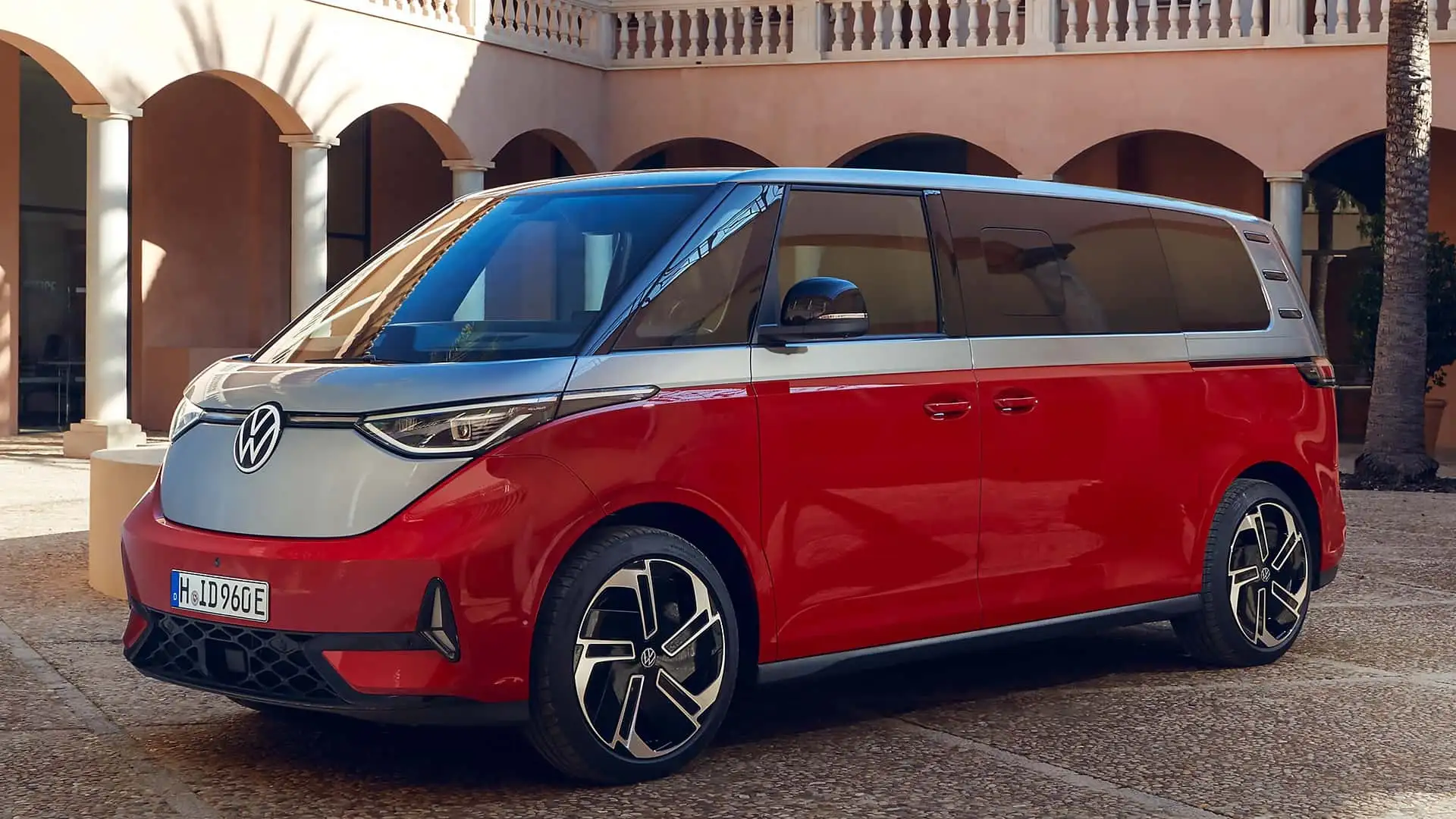
13. **Volkswagen Bus**Few vehicles have transcended their utilitarian origins to become global cultural icons quite like the Volkswagen Bus, affectionately known as the Type 2. This inimitable machine, which defined an entire era of Americana, became synonymous with freedom, adventure, and the laid-back spirit of the 1960s, its image evoked by sunny beaches and smiling faces. Its eventual discontinuation was seen by many as a poignant sign of changing times.
The original Volkswagen Bus was far more than a simple mode of transport; its distinctive, boxy silhouette, coupled with a remarkably versatile and spacious interior, transformed it into a symbol of wanderlust and communal living. It fostered a unique sense of connection, becoming the quintessential road-trip companion for countless adventurers and families. It embodied an enduring ethos of exploration and shared experiences.
Recognizing this profound cultural resonance, Volkswagen has responded to persistent calls for its return, committing to a modern revival. The forthcoming iteration, reimagined as an all-electric vehicle, represents a visionary leap forward. It aims to carry the original’s communal and adventurous spirit into the future, albeit with a cutting-edge, sustainable twist that addresses contemporary environmental concerns.
This thoughtful reinterpretation, set to arrive in dealerships in 2024, promises to blend nostalgic charm with state-of-the-art functionality and zero-emission performance. It is designed to bridge the gap between a revered past and an innovative future, proving that an icon can evolve without losing its soul.
Read more about: Unwavering Dedication: An Engineer’s Multi-Decade Quest to Restore His Dream 1979 Saab 96
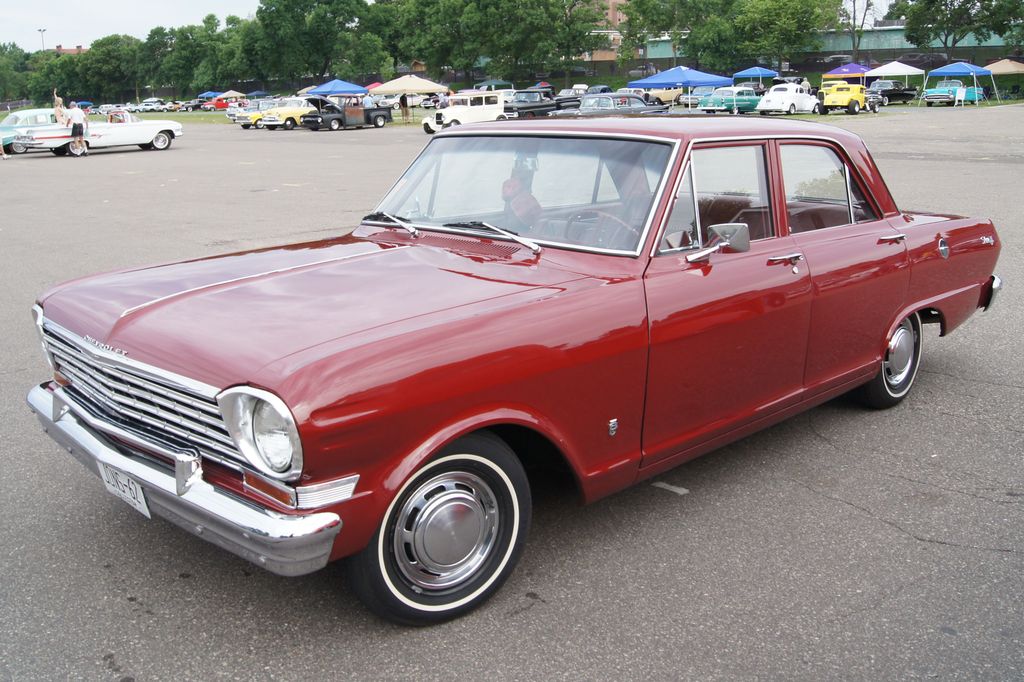
14. **Chevy Nova**The Chevrolet Nova, particularly its earliest iterations spanning from 1968 to 1979, embodied the quintessential American compact performance ethos. Despite its eventual discontinuation, its enduring popularity sparked a brief revival in 1983. This second act, however, proved short-lived, ending in 1985, a testament to the profound connection it forged with enthusiasts.
The Nova, especially its first-generation models, is now a highly coveted item among collectors, celebrated for its clean, understated design and its remarkable versatility. It provided a robust, straightforward platform that readily accepted powerful V8 engine installations. This effortlessly transformed it from an economical compact into a formidable, no-nonsense street machine.
Its enduring appeal lies in this potent combination of understated aesthetics and brute force, resonating deeply with those who appreciate genuine, unadulterated American muscle. With the demand for raw power and classic lines experiencing a resurgence, the time appears ripe for Chevrolet to consider a thoughtful reintroduction of this iconic nameplate. As proven with the Impala, sometimes, a return to classics is exactly what the market craves.
A contemporary Nova, meticulously crafted to balance its cherished traditional ethos with modern engineering advancements, could present a truly compelling proposition. Imagine a lightweight, rear-wheel-drive platform, offering a range of powerful engine options including a potent, soulful V8. All would be tuned to deliver a direct, engaging driving experience that echoes its powerful heritage while seamlessly integrating into today’s performance landscape.
Car Model Information: 2007 Chevrolet Colorado LT
Caption: 1963 Chevrolet Chevy II 300 4-door sedan
Name: Chevrolet Chevy II / Nova
Manufacturer: unbulleted list
ModelYears: unbulleted list
Production: unbulleted list
Class: unbulleted list
Successor: unbulleted list
Categories: 1970s cars, 1980s cars, All articles needing additional references, Articles needing additional references from March 2025, Articles with short description
Summary: The Chevrolet Chevy II/Nova is a small automobile manufactured by Chevrolet, and produced in five generations for the 1962 through 1979, and 1985 through 1988 model years. Built on the X-body platform, the Nova was the top selling model in the Chevy II lineup through 1968. The Chevy II nameplate was dropped after 1968, with Nova becoming the nameplate for all of the 1969 through 1979 models. It was replaced by the 1980 Chevrolet Citation introduced in the spring of 1979. The Nova nameplate returned in 1985, produced through 1988 as a S-car based, NUMMI manufactured, subcompact based on the front wheel drive, Japan home-based Toyota Sprinter.
Get more information about: Chevrolet Chevy II / Nova
Buying a high-performing used car >>>
Brand: Chevrolet Model: Nova
Price: $9,990 Mileage: 0 mi.
Read more about: Boomers, Get Ready to Rev! These 12 Iconic ’60s Car Models Still Drive Our Dreams

15. **Dodge Dart**The Dodge Dart, a nameplate that has graced several distinct vehicles throughout Dodge’s extensive history, found its definitive stride in the 1960s. During this pivotal decade, the first Dart emerged as Dodge’s entry-level, most affordable consumer option. It quickly established itself as a popular choice for commuters seeking a balance of practicality and accessible power, distinguishing itself with clean, simple lines, much like the revered Datsun 510.
This original Dart was a masterclass in understated versatility. Despite its compact dimensions, it offered a surprising range of engine options, including robust V8s. This made it a favorite for those who desired both economical daily transport and a hint of spirited performance. Its straightforward engineering and durable construction earned it a reputation for reliability and value that resonated deeply with a broad spectrum of buyers.
The Dart’s inherent ability to combine affordability with an adaptable and unpretentious design allowed it to transcend mere transportation. It was a car that could be comfortably driven to work all week and then, with a simple press of the accelerator, provide genuine enjoyment on weekend cruises. It truly embodied an era where driving was about direct connection.
Revisiting the Dart nameplate with a deep reverence for its 1960s roots could be a strategic masterstroke for Dodge in the modern era. A new Dart could intelligently emphasize simplicity, engaging driving dynamics, and a strong value proposition. All while incorporating contemporary powertrain options, perhaps even with a nod to performance-oriented variants.
As we conclude this exhilarating journey through the hallowed halls of 1960s automotive legends, it becomes abundantly clear that true greatness is never truly relegated to the past. These weren’t merely machines; they were epoch-defining statements, born from an era of unbridled innovation and daring ambition. Their stories, etched into the very fabric of car culture, continue to inspire and provoke, urging us to look beyond the fleeting trends of the present.
Car Model Information: 1972 Dodge Dart Swinger
Name: Dodge Dart
Caption: 1966 Dodge Dart GT 2-door hardtop
Manufacturer: Dodge
Production: 1959–1976 (US market)
ModelYears: 1960–1976 (US market)
Class: Full-size
Layout: FR layout
Predecessor: Dodge Coronet#Fourth generation (1957–1959)
Related: Plymouth Valiant,Chrysler Valiant,Dodge Phoenix
Successor: Dodge Aspen,Dodge Diplomat,Talbot Tagora
Categories: 1970s cars, All articles with unsourced statements, Articles with short description, Articles with unsourced statements from December 2023, Articles with unsourced statements from May 2025
Summary: The Dodge Dart is a line of passenger cars produced by Dodge from the 1959 to 1976 model years in North America, with production extended to later years in various other markets.
The production Dodge Dart was introduced as a lower-priced full-size model in 1960 and 1961, but became a mid-size car for one model year for 1962, and was then reduced to a compact for two generations, from 1963 to 1976.
Chrysler had first used ‘Dart’ name plates on two Italian styled show cars, in 1956 and 1957, before it became a Dodge model name. The Dart nameplate was resurrected for a Fiat-derived compact car that was introduced in 2012.
Get more information about: Dodge Dart
Buying a high-performing used car >>>
Brand: Dodge Model: Dart
Price: $18,250 Mileage: 40,424 mi.
Read more about: Unearthing the Power: 14 Underrated Small-Block V8 Muscle Cars That Deliver Classic Style and Serious Punch on a Budget
The prospect of these icons returning to our roads, not as mere replicas, but as meticulously reimagined masterpieces, ignites a profound sense of anticipation. Imagine the fusion of their soulful aesthetics with the electrifying performance and sustainable technologies of tomorrow. This isn’t just about nostalgia; it’s about recognizing that the foundational brilliance of these vehicles offers a timeless blueprint for engaging design and exhilarating dynamics. A modern revival of these legends wouldn’t simply be a tribute; it would be a vibrant, roaring testament to the enduring power of automotive passion, reminding us that the golden age of motoring can, and should, always be just around the corner, ready to captivate a new generation of drivers.

